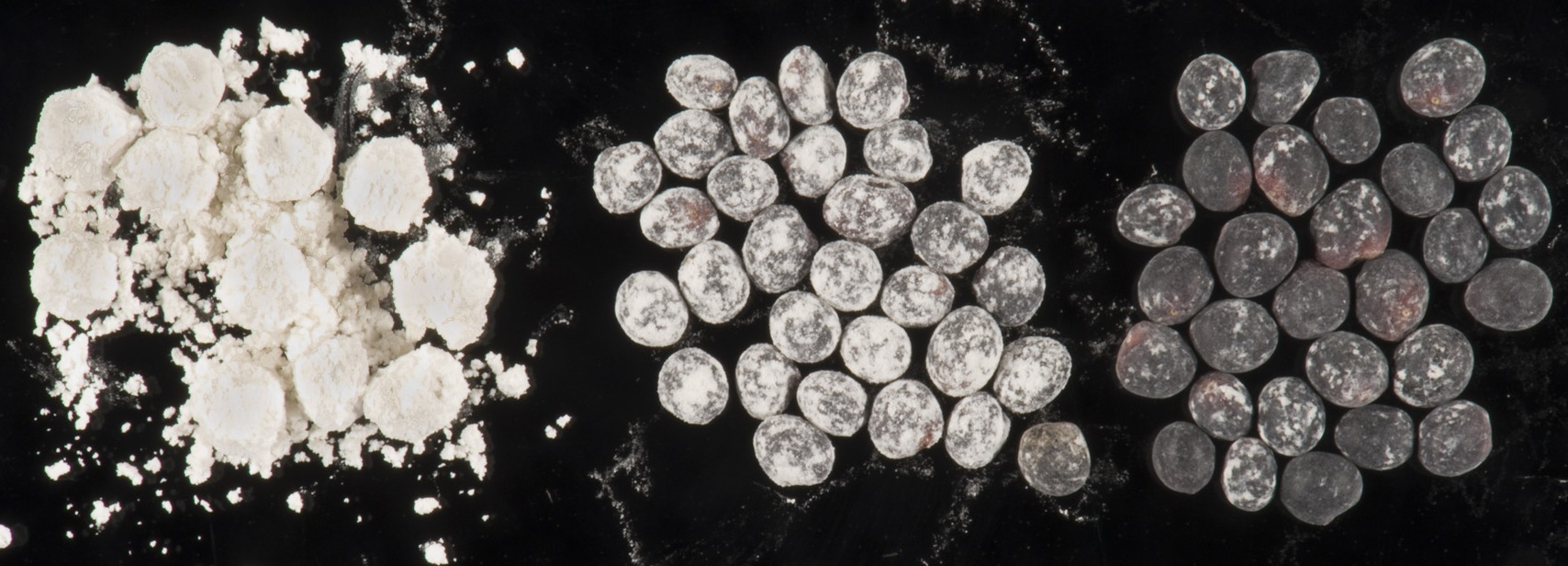Peat-slurry inoculants (continued)
Adhesive solution
Pasture seed inoculants do not have adhesive glue mixed with the peat, unlike those for grain legumes. An adhesive solution must therefore be prepared separately before inoculation, to stick the inoculant to seeds.
After inoculation the coat is often dried with lime for ease of handling and to protect rhizobia against the effects of acidic fertilisers such as superphosphate and acid soils. Store peat cultures away from direct sunlight or heat; refrigerate, but don’t freeze the cultures. Discard packets past their expiry date.
Preparing adhesives
Adhesives include methyl-celluloses such as Methocel®, which is used at a concentration of 0.5%, and Seedstick™ which is used at 10%, although both are diluted for inoculating pods. Use rainwater where possible and use clean equipment.
To prepare 1L of adhesive solution (or slurry):
- Sprinkle the appropriate quantity of the granulated powder on to 200mL of near boiling water, stirring vigorously, until powder is dispersed (the use of a stirrer attached to an electric drill is very effective). Mix 5g powder for a solution of 0.5% final concentration of Methocel®, or 100g powder for a solution of 10% final concentration of Seedstik™.
- Slowly add 800mL of cold water while still stirring vigorously, until an even gel is produced.
- Allow the mixture to cool (preferably overnight) before adding inoculum.
Lime pelleting
Most pasture legume seeds should be lime pelleted using agricultural lime following inoculation with the peat slurry and adhesive. The exceptions are French and yellow serradella, which have the most acid tolerant rhizobia. Do not use slaked or hydrated lime because these are too alkaline and will kill the rhizobia. If required, serradella seed that has been slurry inoculated can be dried-off with clay or finely ground gypsum (4kg to every 50kg of seed) but not lime.
The proportions of adhesive solution, inoculum and lime are dependent on seed size and the concentration of adhesive. Table 1 groups the most common species of pasture legumes according to seed size, together with the appropriate Group of inoculum.
Details of inoculation methods
General guidelines for inoculation are provided in Table 2 but preparation of trial batches is recommended. Special considerations need to be made for biserrula (higher rate of inoculum) and serradella (clay/gypsum but not lime). French serradella sold in the pod or yellow serradella sold in enhanced pod form need special treatment (see below).
| Seed size (see Table 1) | Materials required for 50kg of seed or pod, peat inoculum | Methocel® (0.5%) | Seedstik™ (10%) | Lime | Seedcote |
|---|---|---|---|---|---|
| Small seed | Two packets | 2L | 2L | 4kg | 10kg |
| Medium seed* | One packet | 2L | 2L | 4kg | 10kg |
| Biserrula and Sulla seed | Five packets | 2L | 2L | 4kg | 10kg |
| Serradella pod | One packet | 6L at 0.16% | 6L at 3.3% | none | 12.5kg |
Prepare the adhesive solution first, then mix the inoculum with the solution, pour the mixture over the seed and stir vigorously until all the seed is wet. Higher rates of solution may be required if seed is dusty or there is a lot of sand or other fine particles. Add lime immediately after inoculation and mix until the seeds are evenly coated (see Figure 1).
Do not use too much lime because seeds will not flow easily through seeding machinery. Likely causes of poor lime pellets include:
- Powdery, soft pellets indicate either too much lime or uneven mixing.
- Pasty-looking pellets with the seed surface exposed indicates too much adhesive solution. Add more lime.
- Small seed clumps may be caused by excessive adhesive that may not break down after adding lime. Minimise this by rubbing the clumps against the side of the revolving drum.
- Hard, glossy, smooth pellets indicate too little lime or too much mixing after adding lime.
Seed can be processed in a cement mixer, by shovelling on a cement floor, or by using a revolving drum. You can also use a tarpaulin, mixing or rolling the seed by lifting alternate corners of the tarpaulin and walking forward. For bulk seed, some growers have developed systems that are based on using augers; however the incorporation of lime can be difficult and can cause blockages.

Inoculating serradella pods
Serradella pods absorb a considerable amount of liquid so larger volumes are required. To inoculate 50kg of pods, prepare two litres of a 0.5% of Methocel® or 10% Seedstik™ solution combined with one standard 250g pack of inoculum Group S. Add water to increase the slurry to six litres, and then mix the slurry with the seed.
An auger system for inoculation of serradella pods is possible since no lime is required. Introduce liquid under low pressure to ensure adequate coverage of the pods. Allow the serradella pods to dry overnight before sowing; otherwise the pods will not flow easily through seeding machinery.
Seed preparation and sowing
Peat-inoculated seed should be drilled into moist soil as soon as possible after inoculating because a delay in sowing leads to increased death rates of the rhizobia. If this is not possible, the inoculated seed must be stored under cool, dry conditions.
Aerial or dry sowing peat-inoculated seed should be avoided because it will result in rapid death of rhizobia and sub-optimal nodulation. Note that seed treatment with pesticides and fungicides is not recommended where seed is to be peat-slurry inoculated because this can be harmful to the rhizobia.
